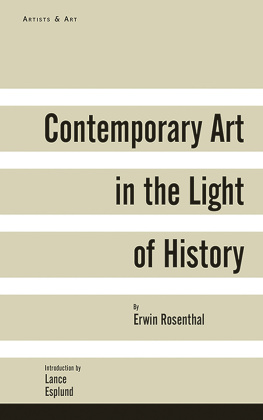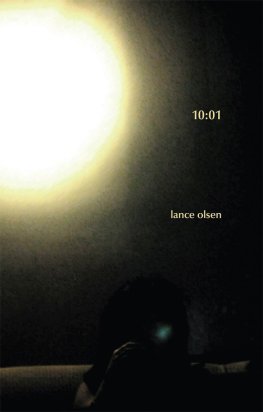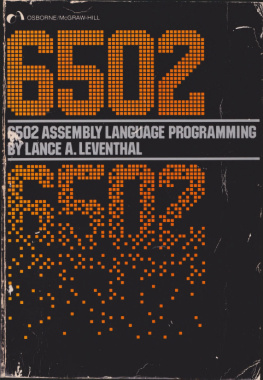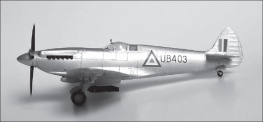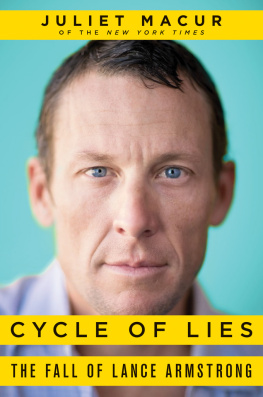Esplund Lance - Contemporary Art in the Light of History
Here you can read online Esplund Lance - Contemporary Art in the Light of History full text of the book (entire story) in english for free. Download pdf and epub, get meaning, cover and reviews about this ebook. City: New York, year: 2013;2012, publisher: Perseus Books, LLC;Arcade Publishing, genre: Art. Description of the work, (preface) as well as reviews are available. Best literature library LitArk.com created for fans of good reading and offers a wide selection of genres:
Romance novel
Science fiction
Adventure
Detective
Science
History
Home and family
Prose
Art
Politics
Computer
Non-fiction
Religion
Business
Children
Humor
Choose a favorite category and find really read worthwhile books. Enjoy immersion in the world of imagination, feel the emotions of the characters or learn something new for yourself, make an fascinating discovery.
- Book:Contemporary Art in the Light of History
- Author:
- Publisher:Perseus Books, LLC;Arcade Publishing
- Genre:
- Year:2013;2012
- City:New York
- Rating:5 / 5
- Favourites:Add to favourites
- Your mark:
- 100
- 1
- 2
- 3
- 4
- 5
Contemporary Art in the Light of History: summary, description and annotation
We offer to read an annotation, description, summary or preface (depends on what the author of the book "Contemporary Art in the Light of History" wrote himself). If you haven't found the necessary information about the book — write in the comments, we will try to find it.
Contemporary Art in the Light of History — read online for free the complete book (whole text) full work
Below is the text of the book, divided by pages. System saving the place of the last page read, allows you to conveniently read the book "Contemporary Art in the Light of History" online for free, without having to search again every time where you left off. Put a bookmark, and you can go to the page where you finished reading at any time.
Font size:
Interval:
Bookmark:
ART
IN THE
LIGHT OF HISTORY
by
ERWIN ROSENTHAL
Introduction by Lance Esplund
A Biographical Note by Julia Rosenthal

Copyright 1971 by Erwin Rosenthal, Lugano, Switzerland;
copyright 2013 by Estate of Erwin Rosenthal
Introduction 2013 by Lance Esplund
Biographical note copyright 2012 by Julia Rosenthal
Originally published in 1971 by Lund Humphries in London and George
Wittenborn in New York.
The publisher gratefully acknowledges the permission granted to reproduce copyrighted material in this book. Every effort has been made to trace copyright holders and to obtain their permission for the use of copyright materials. The publisher apologizes for any errors or omissions and would be grateful if notified of any corrections that should be incorporated in future reprints or editions of this book. Indications of where artworks reside refer to who owned them in 1971. Artists rights are indicated alongside of the art reproduced.
All rights reserved. No part of this book may be reproduced in any manner without the express written consent of the publisher, except in the case of brief excerpts in critical reviews or articles. All inquiries should be addressed to Arcade Publishing, 307 West 36th Street, 11th Floor, New York, NY 10018.
Arcade Publishing books may be purchased in bulk at special discounts for sales promotion, corporate gifts, fund-raising, or educational purposes. Special editions can also be created to specifications. For details, contact the Special Sales Department, Arcade Publishing, 307 West 36th Street, 11th Floor, New York, NY 10018 or arcade@skyhorsepublishing. com.
Arcade Publishing and Artists & Art are registered trademarks of Skyhorse Publishing, Inc., a Delaware corporation.
Visit our website at www.arcadepub.com.
10 9 8 7 6 5 4 3 2 1
Library of Congress Cataloging-in-Publication Data is available on file.
ISBN: 978-1-61145-755-1
Printed in China
This collection of three essays is aimed at throwing some light upon the controversial field of modern art.
The first essay attempts to provide an element of historical perspective, which gives the necessary detachment and objectivity, and helps avoid a great many pernicious misconceptions about modern art. In the mid sixties, abstract art reached a definite stage in its development, and 1964 could be called the year of crisis. The following study is to be understood from this viewpoint.
The second chapter approaches the subject somewhat more directly by exploring the relationship between art and technology. The importance of optical and kinetic elements for contemporary art could not be clearly determined around the mid century. Only in 1966/67 was it possible fully to appreciate their significance; therefore this study is to be seen from the perspective of those years.
The third study, Art Theories and Manifestos, gives a broad survey of the history of aesthetics from antiquity to the middle of the twentieth century. It endeavours to leave the reader with a theoretical framework by tracing the development of aesthetic and critical theories which led to contemporary trends in art.
These studies do not try to set up axiomatic historical rules; rather they attempt to envisage the history of art in terms of perpetual principles. As a sort of modest guide this small book, stressing the same creative impulses for ancient as well as contemporary art, may help to overcome the widespread bewilderment about modern art. The mystery of the growth and change of styles is deeply embedded in the history and mind of man. All the different and even contradictory expressions and achievements in the figurative arts are but reflections of the eternal problem of transferring aesthetic sensibilities into images, forms, colours, or pure symbols. Thus these reflections could be understood as studies in continuity.
E. R.
Erwin Rosenthals book Contemporary Art in the Light of History is as relevant and important today as it was when it was first published more than forty years ago. One might ask how Rosenthals textwritten before the advent of the Internet and social media; before the Culture Wars and the persecution of the Chinese dissident artist Ai Weiwei; before the fall of the Berlin Wall and the attacks of 9/11could have any real bearing on art in our contemporary world. The answer is that Rosenthal, who is as engaged here with what artists make as he is with artists motivations, has anticipated not our historical milestones and technological advances but, rather, our ongoing desire to understand what drives artists individually and our culture collectively.
As in Arnold Hausers large multivolume The Social History of Art, Rosenthals compact text considers art in relation to other fieldsliterature, science, technology, music, philosophy, psychology, politics, and spirituality. He takes into account the importance of intellect and emotion; Romantic and Classical tendencies; mimesis and fantasia; insanity, reason, rebellion, shock, and the grotesque; the dual poles of representation and abstraction; and the metaphysical origins of art.
Rosenthal sees art not as progressing but, rather, as always relevant, no matter when or where it was made. In the Foreword to Contemporary Art in the Light of History, he writes that his studies attempt to envisage the history of art in terms of perpetual principles. As a sort of modest guide this small book, stressing the same creative impulses for ancient as well as contemporary art, may help to overcome the widespread bewilderment about modern art.
To that end, Rosenthal is concerned with putting contemporary art in the context of the art of the past. Writing in clear, limber prose, he makes leaps through history and across disciplines. His great range is underscored by the simplicity of his language and the matter-of-factness of his conclusions. To read this book is to participate with the author as he wrestles with challenging ideas, paradoxes, and matters of spirit. When Rosenthal, discussing the necessary tension between Apollonian and Dionysian tendencies, writes that the interaction of theory and free inspiration is one of the ultimate secrets of the artist, we are brought closer to art through the acceptance of its mystery.
Interested not in influence but in analogy, which Rosenthal refers to as related psychological climates, the author lays out art-historical links in a chain. He draws connections and parallels among artists attitudes and styles in ancient Egypt, antiquity, the Medieval, Renaissance, Baroque, and Modern eras. All the different and even contradictory expressions and achievements in the figurative arts, Rosenthal writes, are but reflections of the eternal problem of transferring aesthetic sensibilities into images, forms, colours, or pure symbols.
Rosenthal begins with the art of his present. He recognizes that Mannerism, Romanticism, Surrealism, and Abstract Expressionismstill somewhat dominant in 1971all have their roots in the anti-classical tradition of antiquity, in the oriental occultists and mysticsin whose work Orphic dogma, Hebrew philosophy, and the rites and cults of Ancient Egypt lingered on. Rosenthal connects the objectivity, purity and depersonalizationthe Cartesian spiritof Fra Angelico to analogous aspects in Piero della Francesca, Raphael, Poussin, Czanne, Mondrian, and the Op Art movement. Paying close attention, for example, to the Op Artist Bridget Riley, he aligns her and other contemporary artists work with the perceptually based science and art of Leonardo, the philosophy of Blaise Pascal, moving sculptures in Renaissance gardens, the free line of Art Nouveau and Kandinsky, the geometry of Naum Gabo, Jean Arp, and Constantin Brancusi, and the colour clavicembaloa keyboard instrument which could be combined with optical effectsinvented by the 16th-century Italian painter Arcimboldo.
Font size:
Interval:
Bookmark:
Similar books «Contemporary Art in the Light of History»
Look at similar books to Contemporary Art in the Light of History. We have selected literature similar in name and meaning in the hope of providing readers with more options to find new, interesting, not yet read works.
Discussion, reviews of the book Contemporary Art in the Light of History and just readers' own opinions. Leave your comments, write what you think about the work, its meaning or the main characters. Specify what exactly you liked and what you didn't like, and why you think so.

